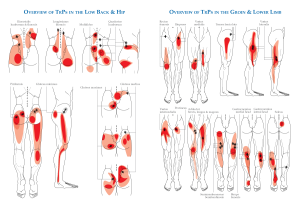Why Does My Back Regularly Hurt After My Workout?

Category: | Author:
Working out and getting regular exercise is an important part of leading a healthy lifestyle, but workouts also tend to be a common source of back pain for a number of patients. That’s not to say that we want you to shy away from intense activity, but we do want to help you understand why you may be experiencing discomfort or back pain following a workout so that you can make some adjustments to avoid it in the future. In today’s blog, we explore why your back may be hurting following your workout.
Spine Pain After A Workout
If you put yourself through a moderate or high intensity workout, it’s common for you to have a little discomfort in your back for a short while afterwards. You’ll experience some mild to moderate soreness as your muscles work to recover from the trauma of physical activity, and this soreness should start to fade after 24-48 hours. However, if your discomfort worsens after a few hours or you describe it as sharp, intense or pulsing, you may be suffering from something more serious than soreness, like an injury.
If you’ve found that you regularly deal with spinal pain as opposed to soreness following a workout or intense exercise, your discomfort could be caused by a few different issues. Here’s a look at some of the common underlying factors that lead to back pain following a workout.
- Poor Form – No matter what exercise you pursue, if you have poor form, your back and your whole body can suffer. Whether you’re lifting weights or going for a run, if you’re out of proper alignment, extra stress can end up being placed on your spine. If this happens, certain areas can become overloaded with stress, leading to an increased risk of injury. Consider working with a trainer or physical therapist to ensure your form is correct during your workout.
- Overstress – Building off the above point, overstress injuries are incredibly common in individuals looking to start a workout routine or in those who are looking to set new personal bests. If you push yourself too hard or you work out too frequently without giving your spine enough time to recover from the trauma of the activity, muscle groups can be weakened, exposing them to injury the next time you work out. Many people alternate between arm days and leg days or lifting days and cardio days to give certain areas of their body some time off from stress so that they can prevent overstress injuries.
- Core Weakness/Instability – Your core muscles help to support and stabilize your spine, and if these areas are weak, they may not be able to handle the stress you throw at them during a workout, meaning this stress ends up being placed on the spine. A workout or exercise routine is a great way to improve your core strength, but you need to gradually take on bigger physical challenges so that core instability doesn’t cause problems for your back. Don’t just focus on your arms and your legs, be sure to devote some time to developing your core.
- Dehydration – Finally, make sure that you stay hydrated during your workout and you continue to take in plenty of fluids after your workout is complete. Being dehydrated can make it harder for healthy blood to circulate to your spine to aid in tissue repair and to help control inflammation and swelling after a workout. Spinal inflammation and muscle cramps can be the result of a combination of physical stress and dehydration, so make sure that you combat one of these factors by managing your fluid intake.
If you think you’ve suffered a more severe injury during your workout, connect with a doctor or a specialist in your area who can assess the health of your spine and provide some individualized treatment recommendations. Disc issues, muscle strains and pinched nerves are all common in athletes who regularly seek out intense physical exercise, and they can linger unless you proactively treat them. For help treating your spinal issue, reach out to Dr. Sinicropi and the team at The Midwest Spine & Brain Institute today at (651) 430-3800.
Related




